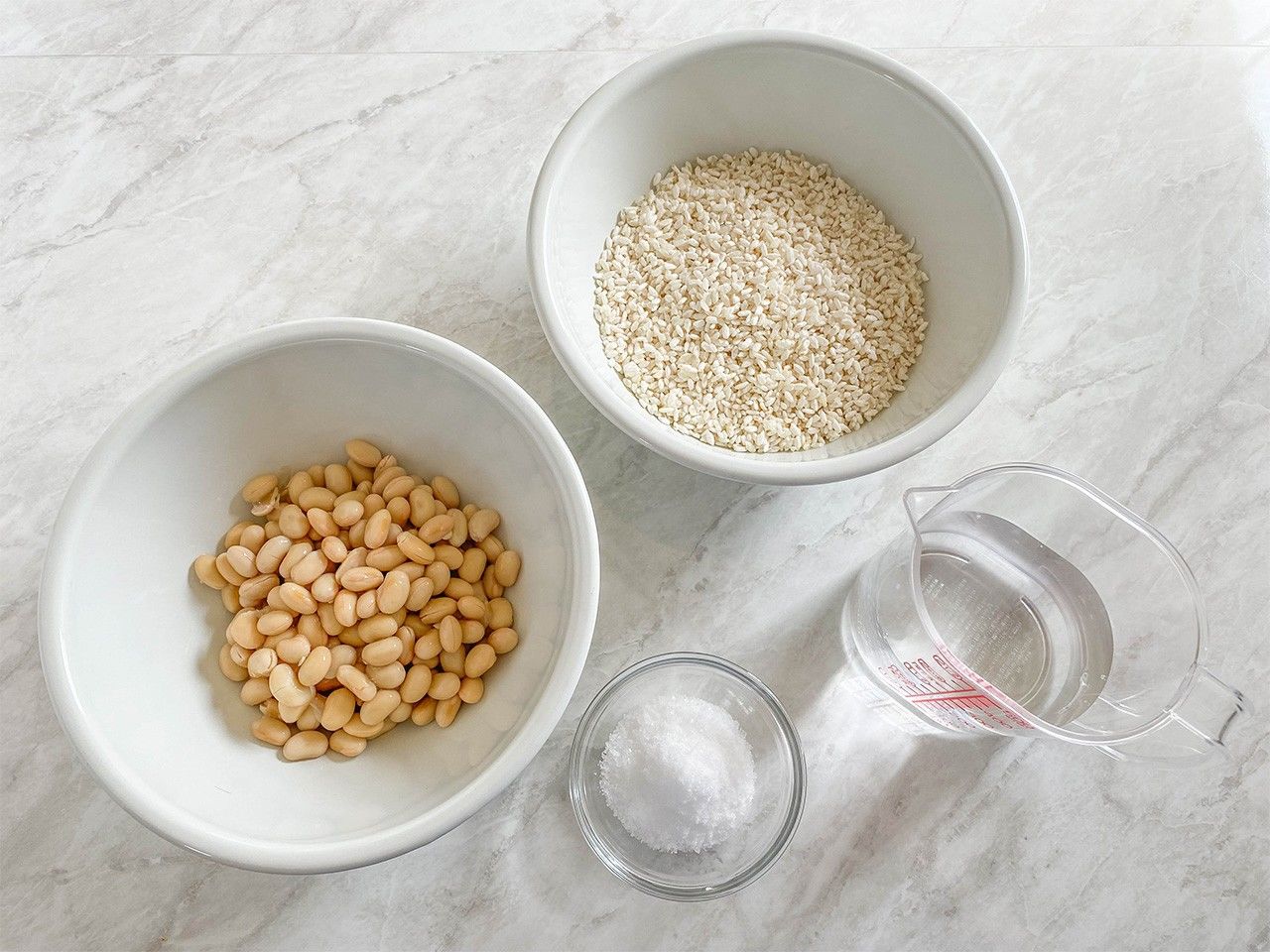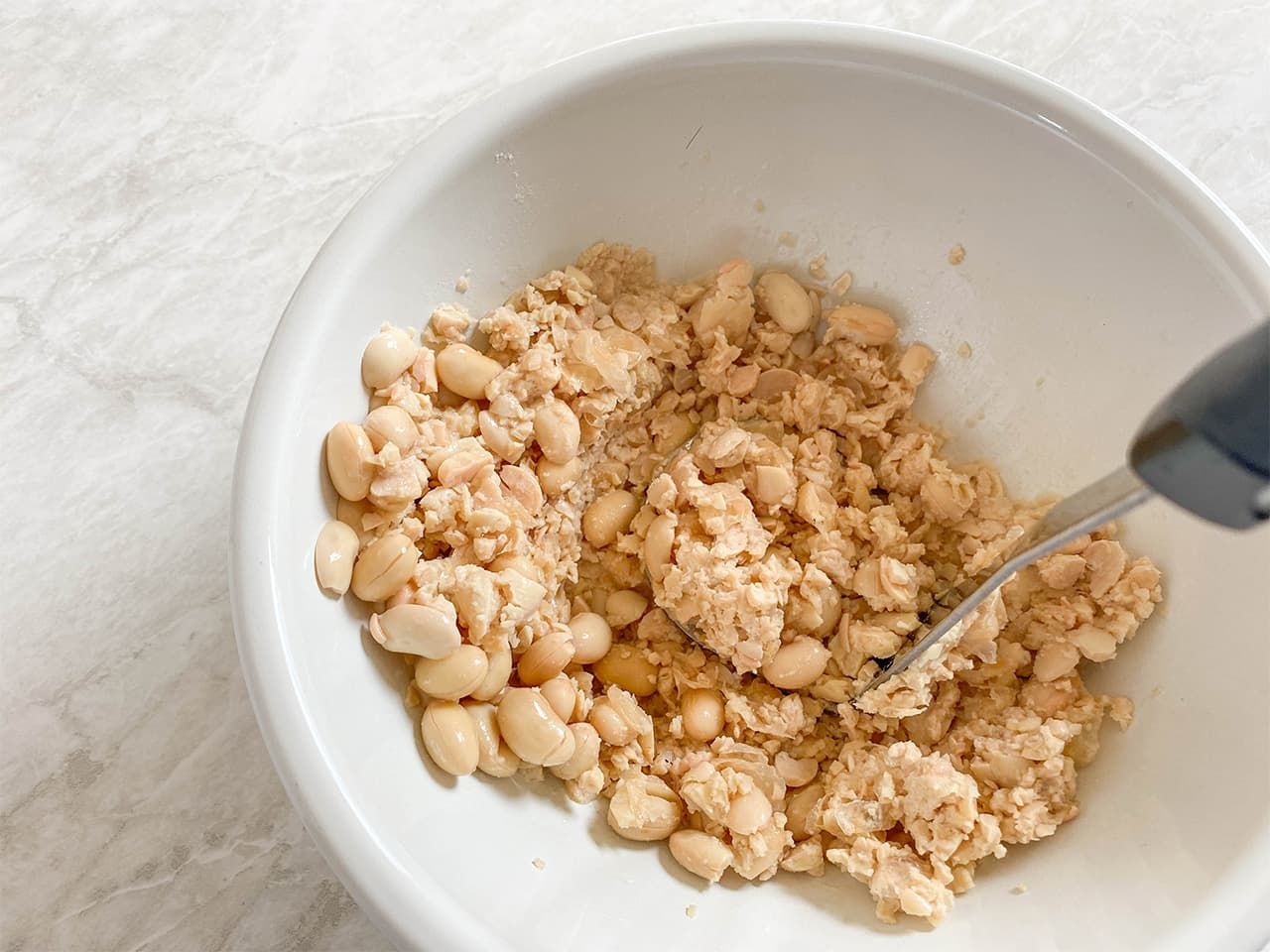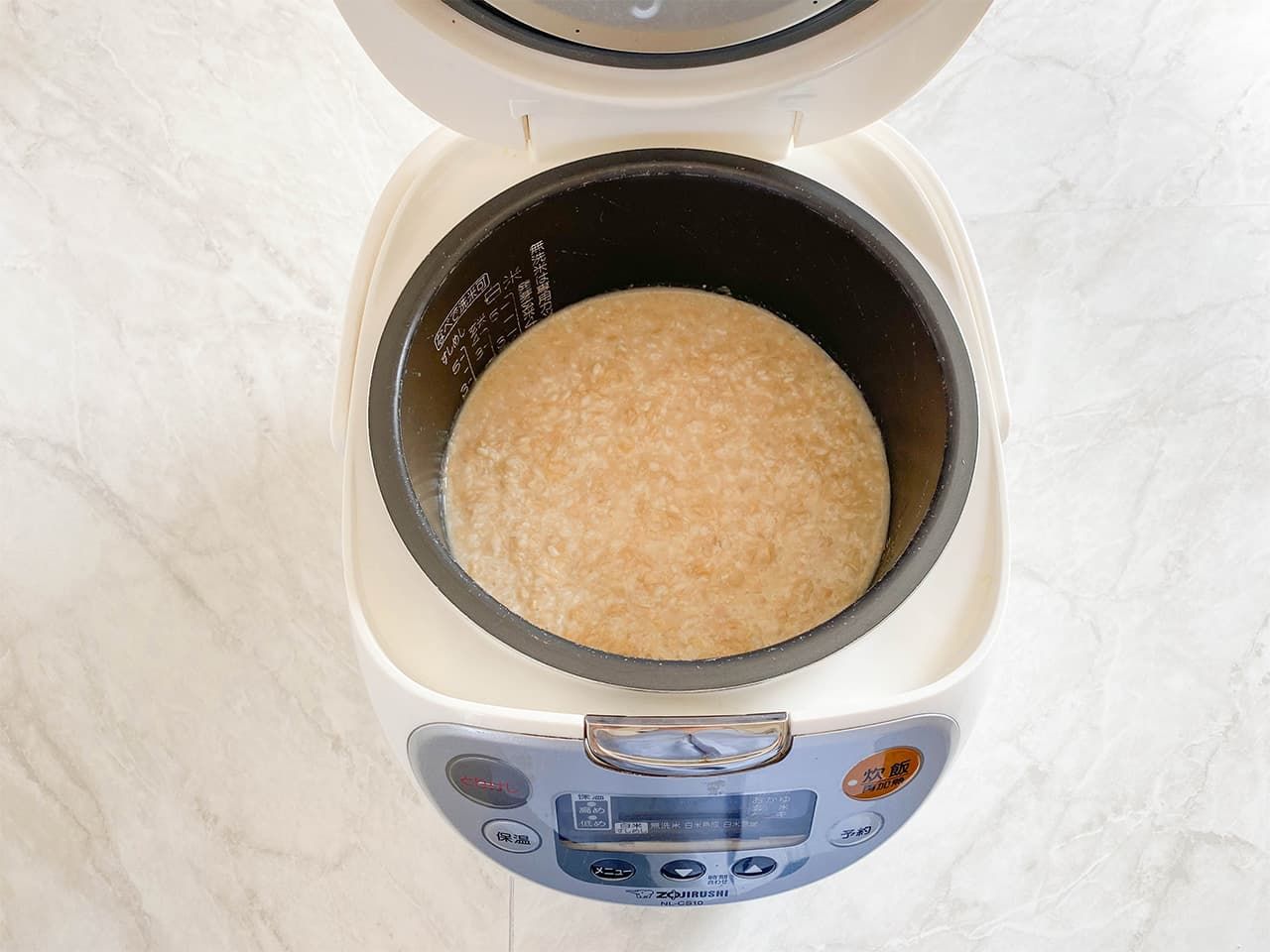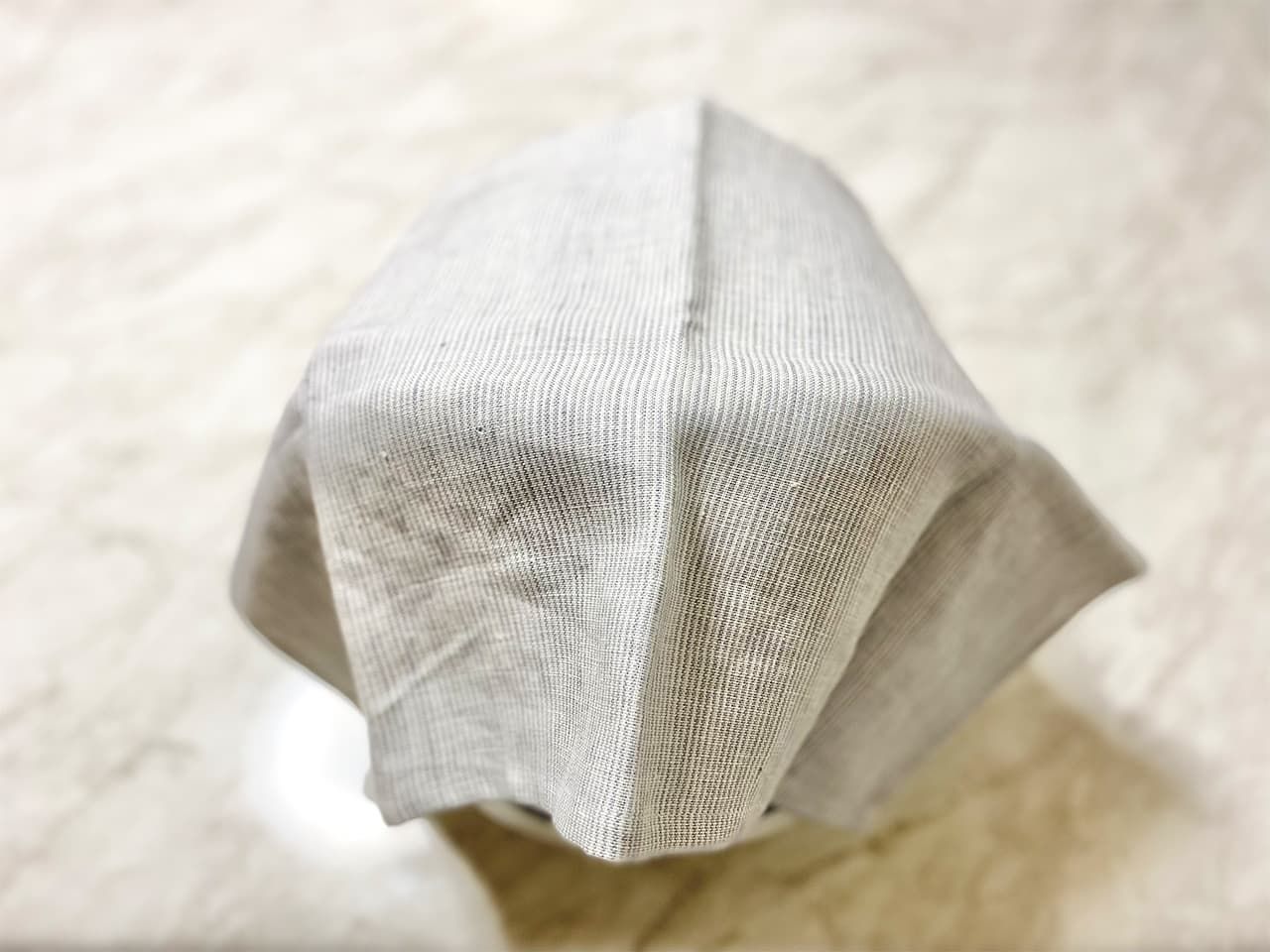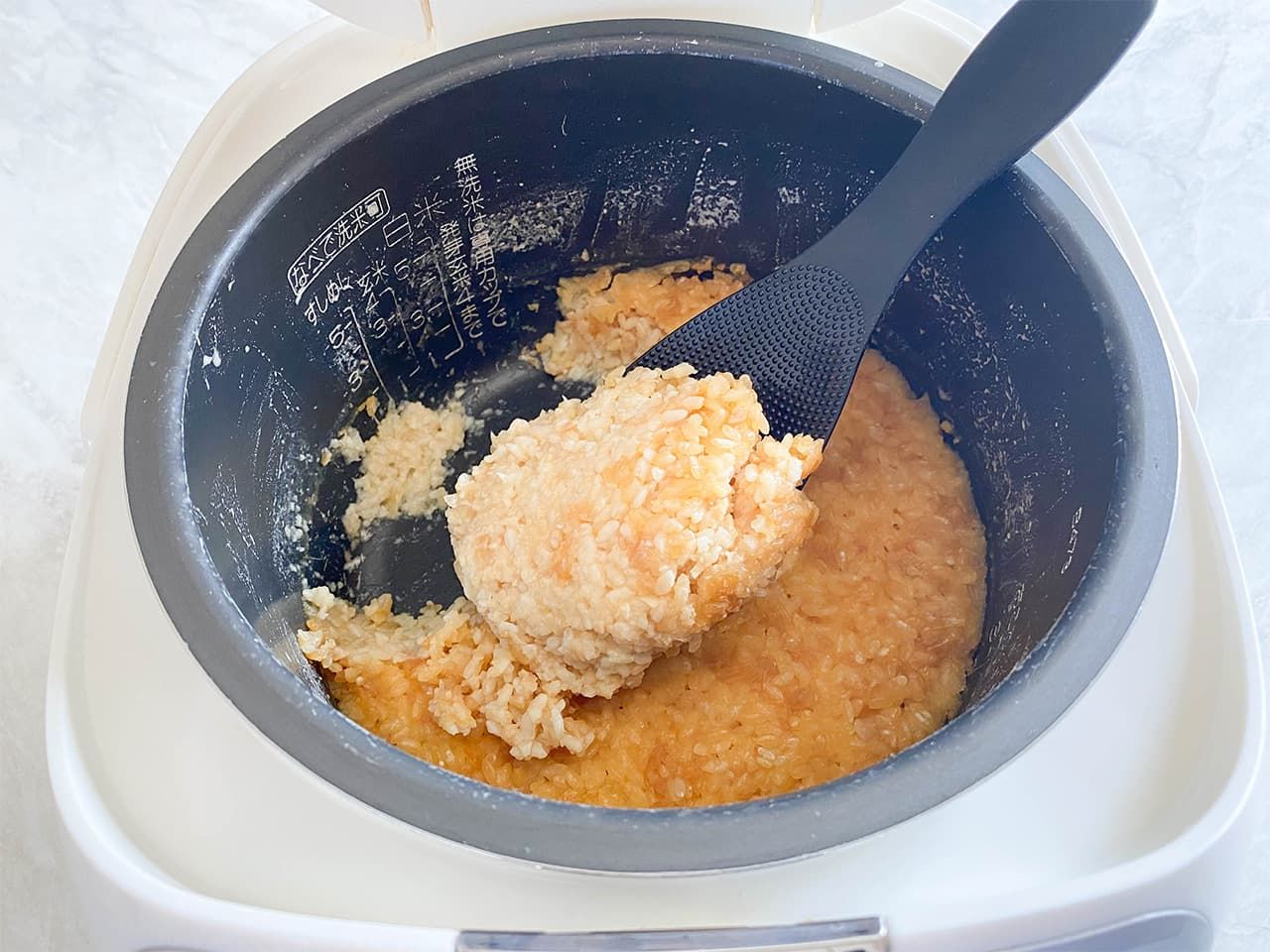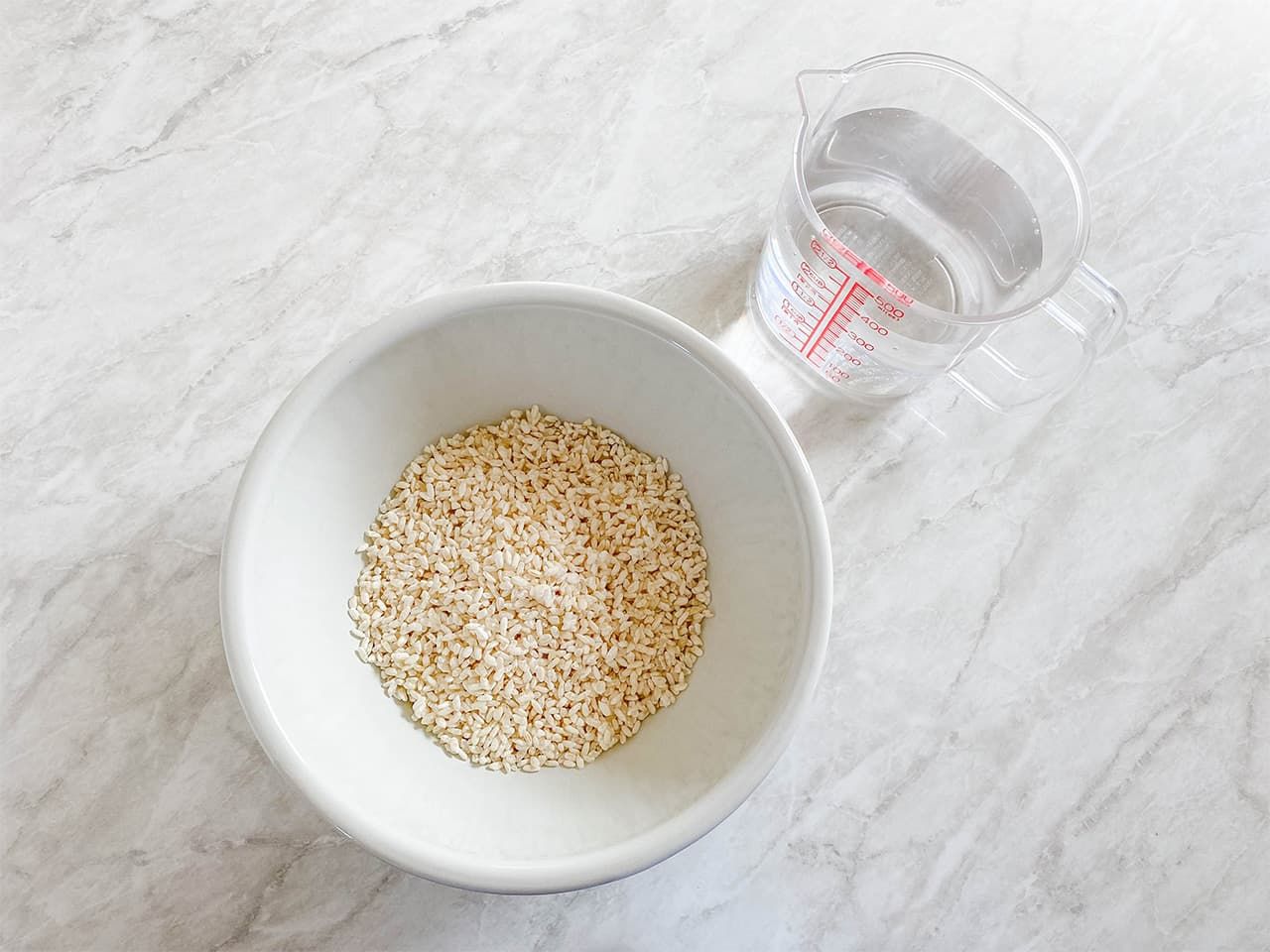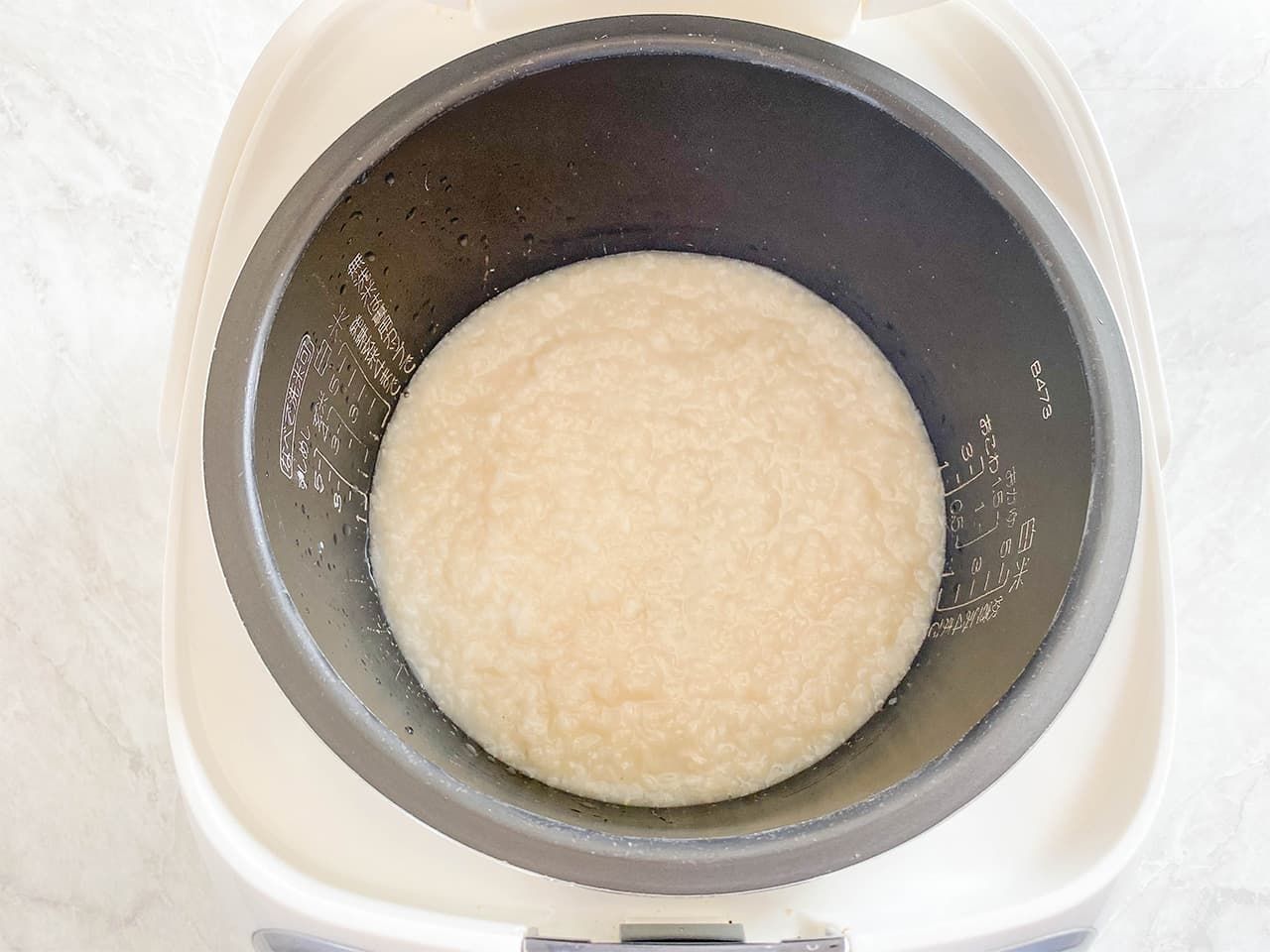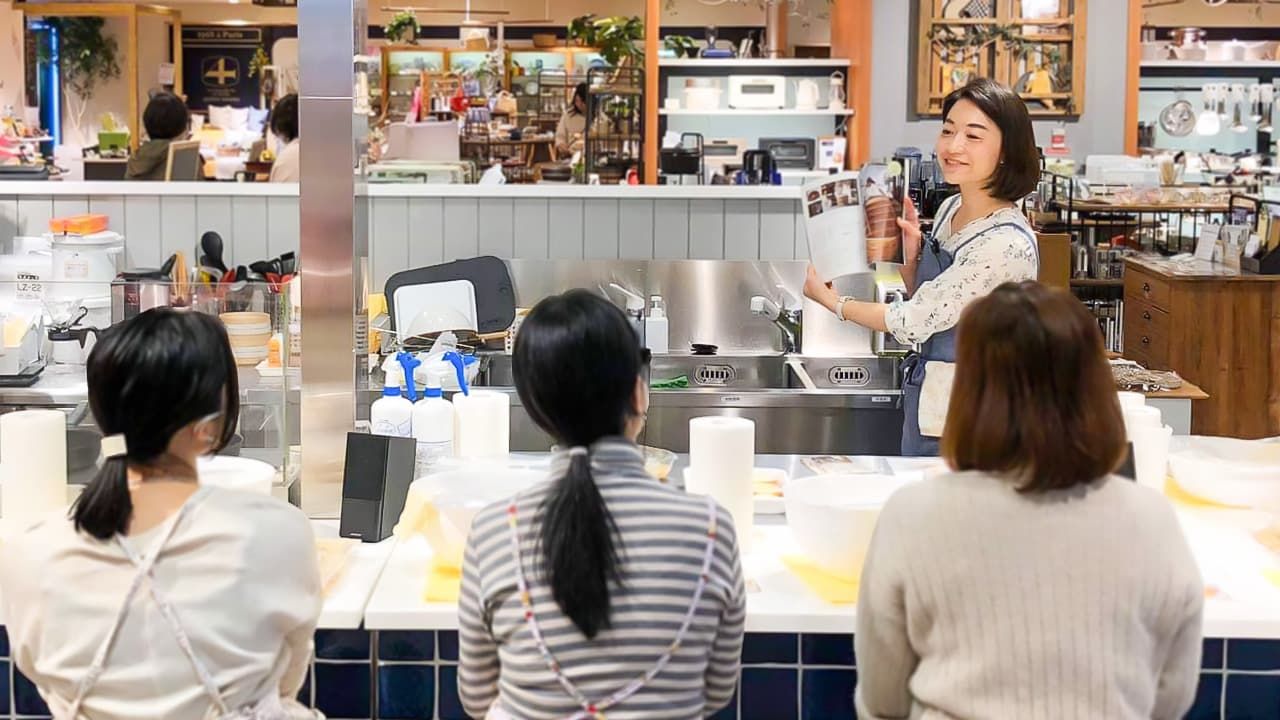
Bringing “Kōji” to the Dining Table: Recipes Ready in Half a Day
Lifestyle Food and Drink Culture Health- English
- 日本語
- 简体字
- 繁體字
- Français
- Español
- العربية
- Русский
Health Function of Foods in the Spotlight
Kōji, a product of cereal inoculated with spores of kōji mold (Aspergillus oryzae), is an indispensable ingredient in Japanese cuisine. It is used in the production of many traditional Japanese condiments, including miso paste and soy sauce, as well as for brewing sake and mirin. Kōji’s fermenting power helps to accentuate the flavors in foods. Its appeal has grown worldwide in recent years, with awareness increasing among chefs of leading restaurants and other clued-in culinarians.
A few years ago, two condiments prepared using kōji enjoyed a new wave of popularity in Japan: shio-kōji and amazake. This brought greater attention to the health functionality of kōji, with various studies demonstrating that active consumption of kōji can provide health and even beauty benefits.
Amazake has gained nicknames such as “the IV infusion you drink” and “drinkable beauty serum” (which admittedly may sound more appealing in Japanese). Its main sweetening component, glucose, is rapidly absorbed by the body, providing an energy source for mental and physical activity. It also contains abundant B-group vitamins and important amino acids, oligosaccharide, and dietary fiber, helping to promote a healthier gut, relieving fatigue, and providing anti-aging benefits.
Amazake can be made using lees, a by-product in sake brewing, but when made using kōji, it is completely alcohol-free, making it suitable for children or others wishing to avoid alcohol. Despite its strong sweet taste, it contains no added sugar.
White Miso and Amazake: Two Great Ways to Enjoy Kōji
As a cook and qualified nutritionist, I adhere to a philosophy that, with any ingredient I use, it is crucial to know who made it, as well as where, how and why. This applies to condiments too, and in particular, I am fascinated with the background of miso.
I consider myself a “miso hunter.” As of April 2024, I have visited 97 miso manufacturers across Japan. At home, I keep over 50 types of miso at hand, and I have made over 180 types. I have led miso-making and other workshops and cooking classes, with the recipes below for white miso and amazake, easily prepared in an electric rice cooker, proving particularly popular. (Methods for preparation without a rice cooker are included at the end of the article.)
People interested in health and beauty love white miso and amazake, because they are a way to consume more kōji. Below, I have included suggested preparation methods, recipes, and their general characteristics.
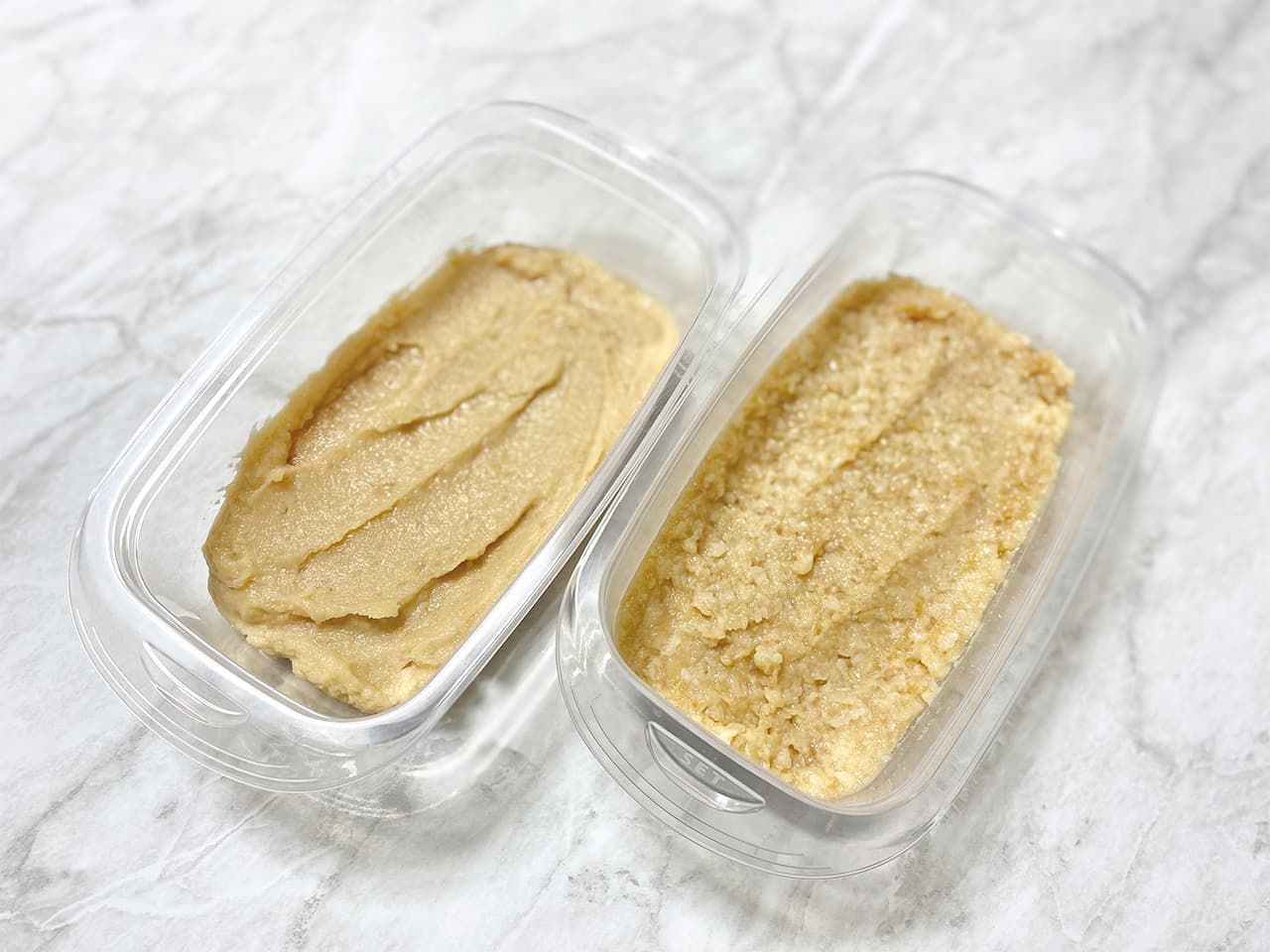
White miso made in a rice cooker (right). It can be made smoother using a blender, for a texture closer to commercial versions (left). (© Iwaki Misaki)
Easy White Miso with Precooked Soybeans
Ingredients
(Makes approximately 650 g, salt content roughly 5%)
- 230 g precooked soybeans (equivalent to 100 g dried soybeans)
- 300 g rice kōji
- 30 g salt
- 250 ml water
Directions
- Mash the beans.
- Mix the rice kōji and salt. (This makes it easier to mix into the beans.)
- Place (1) and (2) to the rice cooker, add the water, and mix well.
- With the lid half-open, place a towel over the top, heat for 6 hours on “Keep Warm” (or “Warm”) mode.
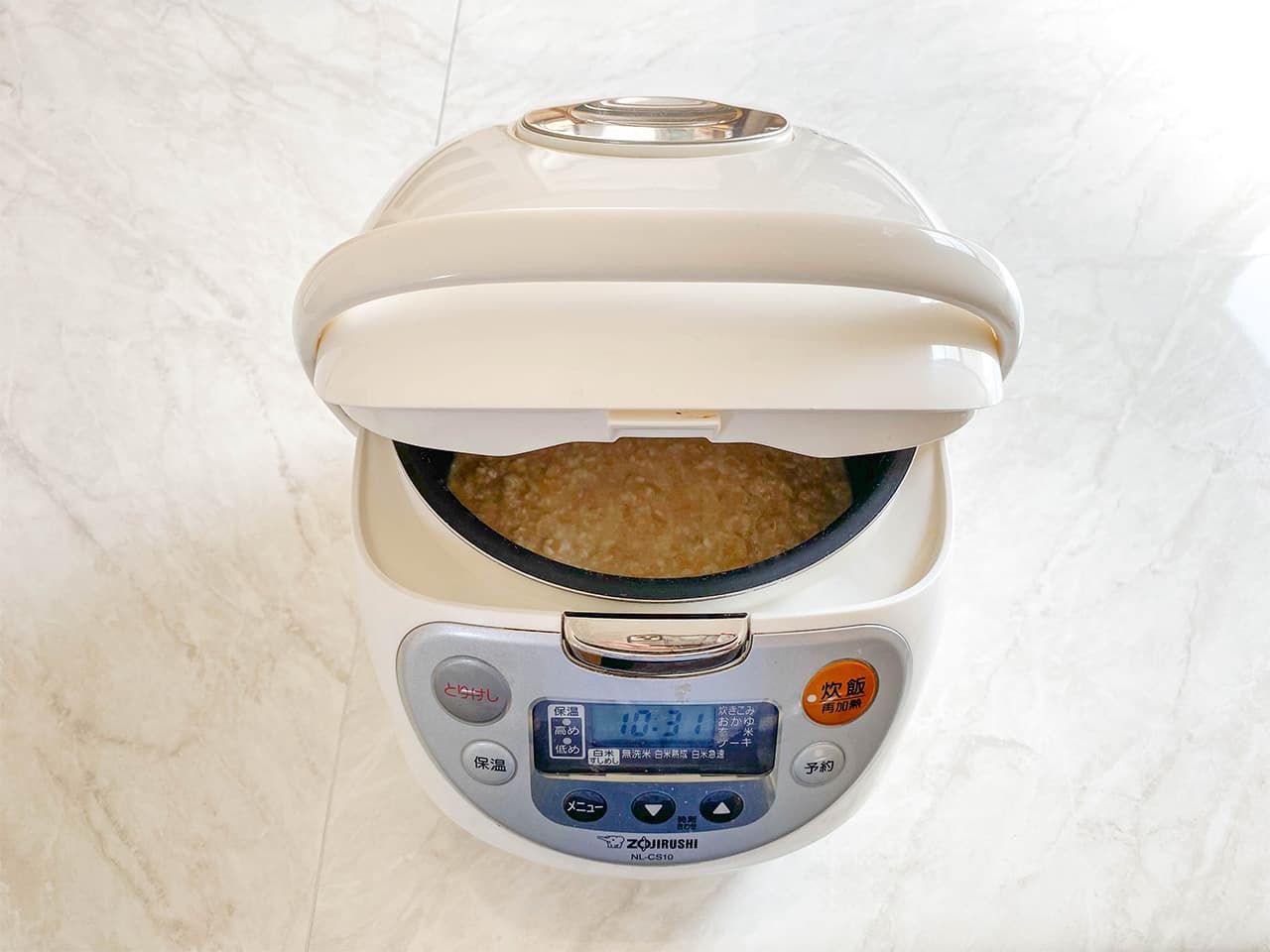
The ideal temperature is around 55°C (130°F). The mixture will overheat if the lid is closed. (© Iwaki Misaki)
- Your miso is ready! Transfer the finished white miso to a clean, sealable container to allow it to cool. Store in the refrigerator. It can be eaten right away, but leaving it in the refrigerator for a week will enhance the flavor.
It will keep up to a month in the refrigerator, or 6 months in the freezer. It does not freeze hard, so it can be used frozen without defrosting.
How Does White Miso Taste?
Miso in general is made from steamed or boiled soybeans, fermented with kōji and salt. Miso varies significantly in color and flavor by region, according to local traditions and tastes. White miso is said to have originated as a food served in the imperial court in what is now Kyoto during the Heian period (794–1185). It is off-white, as the name suggests, and has a distinct sweetness. It was used in Japanese sweets instead of sugar, and later became an essential ingredient in shōjin-ryōri (Buddhist vegetarian cuisine) and kaiseki-ryōri (high-end Japanese course meals).
Miso develops a stronger taste the longer it ferments. Because white miso is only fermented for a matter of days, or up to one month at most, it has a much milder flavor. Another difference is that the ratio of soybeans to rice kōji in regular light-colored miso is 1:1, whereas white miso contains more rice koji, with a ratio of 1:2 or even higher. The more kōji used, the sweeter the taste. Also, the salt content for regular light miso is usually 10%‒12%, compared with just 5%‒6% for white miso.
An Incredibly Versatile Ingredient
White miso is most commonly used blended with vinegar as a dressing for vegetables (su-miso-ae) and in Kansai-style zōni, a vegetable and rice cake soup served at New Year. But many years of research into food preparation with miso has taught me how versatile white miso is, and I want to share this with people around the world.
White miso is not as salty as other varieties: in fact the taste is so mild it can be eaten raw. To understand the taste, imagine slightly salty white anko (sweet bean paste), or a rich-tasting white chocolate.
If I want to make something creamy, such as carbonara sauce or cream stew, I replace cream in the recipe with white miso. This is ideal for people who are lactose intolerant or who are counting calories.
Incidentally, when cooking with white instead of regular miso, roughly double the amount is required to achieve the same degree of saltiness. Of course, this also doubles your intake of soybeans. Substituting white for regular miso therefore provides not only the nutritional value of additional kōji, but also more protein and dietary fiber from the extra soybeans consumed.
The white color also allows extra versatility in the appearance of dishes. For example, adding a mashed pickled plum (umeboshi) will produce a pink, plum-flavored miso. Similarly, basil leaves or other vibrantly colored vegetables can be crushed and blended in to make purees or sauces.

Basil miso made using a blender. The fresh aroma is an ideal match for grilled meat or fish. (© Iwaki Misaki)
Because the taste is not overpowering, it pairs well with a wide range of other ingredients. Mixing it with other condiments such as an acidic seed mustard, or doubanjiang (Chinese bean chili paste), will enhance the flavors. I even add it to mascarpone cheese in my tiramisu for a richer taste. It is also great with strawberries, kiwi fruit, and various dried fruits.
As Easy As Pie: Amazake
Amazake, which literally means “sweet sake,” has a history stretching back centuries. The Nihon shoki (Chronicle of Japan), compiled in the Nara period (710‒94), describes a beverage it calls amanotamuzake, which is believed to be the ancestor of amazake. In the Heian period (794–1185) nobles in the imperial court enjoyed chilled amazake in summertime. Nowadays, people tend to think of amazake as a winter beverage, but in haiku poetry, it is used as a seasonal word indicating summer.
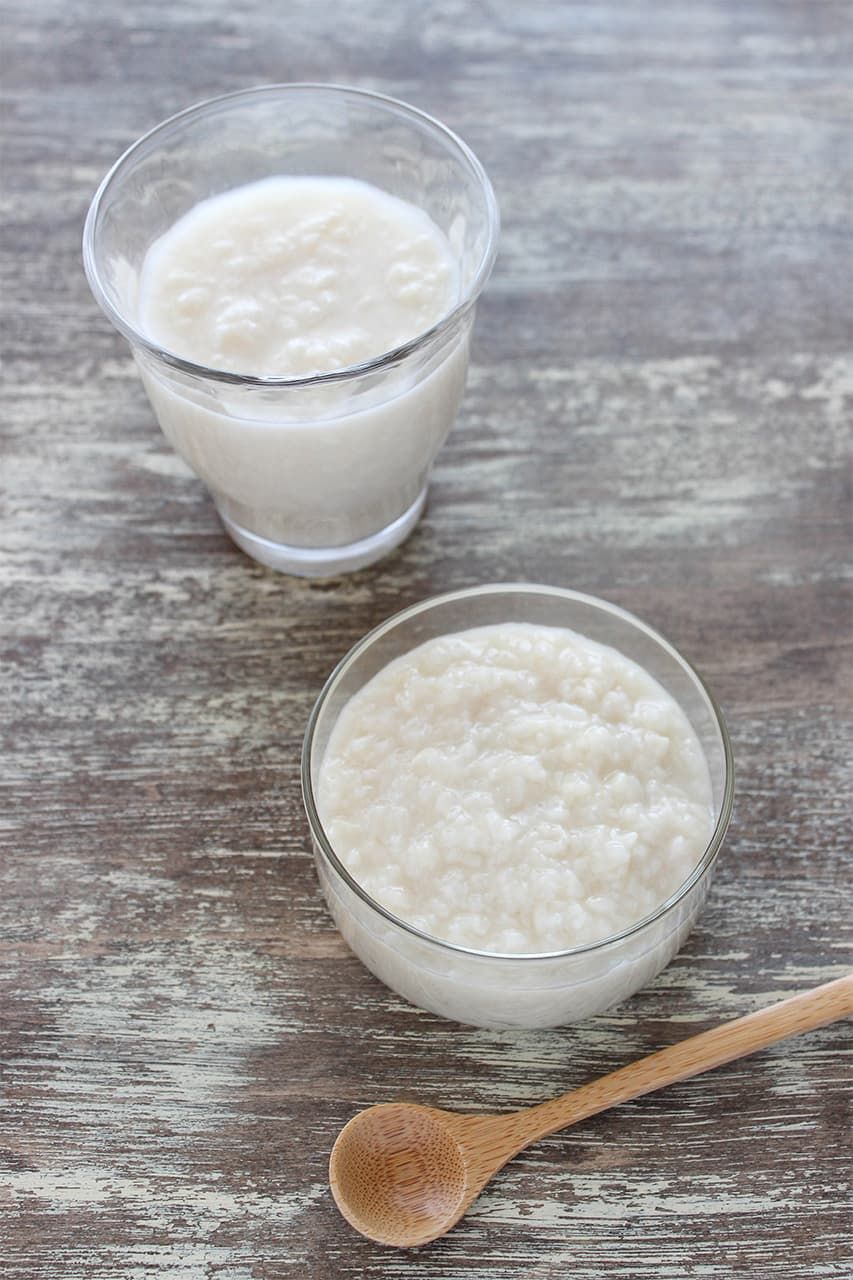
Amazake imparts health and even beauty benefits. (© Iwaki Misaki)
Ingredients
- 200 g rice kōji
- 400 ml water
Directions
- Break apart the rice kōji by hand and place in the rice cooker together with the water.
- With the lid half-open, place a towel over the top, heat for 8 hours on “Keep Warm” (or “Warm”) mode. (Refer to instruction 4. for making white miso)
Heating for 6 hours will result in less-sweet amazake, while 10 hours will make the taste stronger. If heated for over 15 hours, it will start to sour. - Your amazake is ready! Transfer the finished amazake to a clean, sealable container to allow it to cool. Store in the refrigerator.
It will keep up to a week in the refrigerator, or 6 months in the freezer. Defrost frozen amazake naturally.
Amazake is very sweet, so in addition to drinking it, you can use it to sweeten coffee, or as a sugar substitute in stewed dishes. By adding chopped spring onions, garlic, soy sauce, miso and so on, you can make a dipping sauce for barbecued meat. It is also ideal as a salad dressing base.
Alternatives to Using a Rice Cooker
You can also make white miso and amazake in a yogurt maker or oven instead of a rice cooker.
Using a Yogurt Maker
Depending on the size of the maker, you may need to halve the ingredients or prepare it in two batches. The time required is the same as for a rice cooker for either white miso or amazake.
Using an Oven
Lay a cloth in the oven and place a plastic bowl (or similar) containing the ingredients on the cloth. (A metal container will overheat the mixture.) Set the oven to fermentation mode or proofing mode, if it has one (approximately 45°C, or 110°F). The time required for white miso is 8‒10 hours, and for amazake 10‒12 hours.
Now that you know how easy it is to make white miso and amazake using kōji, I hope it helps you to enjoy healthy, traditional Japanese condiments more often, and provides more variety in your daily menu.
(Originally published in Japanese. Banner photo: Iwaki Misaki giving a workshop on miso preparation. © Iwaki Misaki.)

